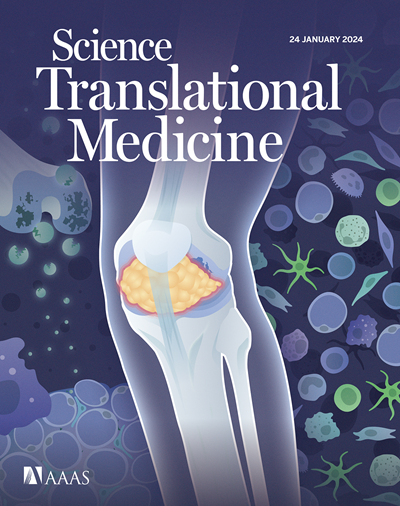Human monoclonal antibodies targeting subdominant meningococcal antigens confer cross-protection against gonococcus
IF 15.8
1区 医学
Q1 CELL BIOLOGY
引用次数: 0
Abstract
Gonococcus, a bacterium resistant to most antibiotics, causes more than 80 million cases of gonorrhea annually and is considered a high-priority pathogen by the World Health Organization. Recently, vaccine development prospects were boosted by reports that licensed meningococcus serogroup B (MenB) vaccines provided partial protection against gonococcal infection. To determine antigens responsible for cross-protection, memory B cells isolated from 4CMenB-vaccinated volunteers were single cell–sorted to identify antibodies that kill gonococcus in a bactericidal assay. Nine different antibodies, all deriving from the IGHV4-34 germline and carrying an unusually long heavy-chain complementarity-determining region 3, recognized the PorB protein; four others recognized the lipooligosaccharide; and another four had unknown specificity. One of the PorB-specific antibodies provided protection in a mouse model of gonococcus infection. The identification of PorB and lipooligosaccharide as key antigens of gonococcal and meningococcal immunity provides a mechanistic explanation of the cross-protection observed in the clinic and shows that isolating human monoclonal antibodies from vaccinees can be instrumental for bacterial antigen discovery.
针对脑膜炎球菌亚显性抗原的人单克隆抗体对淋球菌具有交叉保护作用
淋球菌是一种对大多数抗生素具有耐药性的细菌,每年导致超过8000万例淋病,被世界卫生组织视为高度优先的病原体。最近,有报道称获得许可的B群脑膜炎球菌(MenB)疫苗对淋球菌感染提供了部分保护,这提振了疫苗的发展前景。为了确定负责交叉保护的抗原,从接种过4cmenb疫苗的志愿者身上分离的记忆B细胞进行单细胞分选,在杀菌试验中鉴定杀死淋球菌的抗体。9种不同的抗体均来自IGHV4-34种系,携带异常长的重链互补决定区3,可识别PorB蛋白;另外四个识别出了低脂糖;另外4个有未知的特异性。其中一种porb特异性抗体在淋球菌感染小鼠模型中提供保护。鉴定出PorB和低脂寡糖是淋球菌和脑膜炎球菌免疫的关键抗原,为临床观察到的交叉保护提供了机制解释,并表明从疫苗接种者中分离人单克隆抗体可用于细菌抗原的发现。
本文章由计算机程序翻译,如有差异,请以英文原文为准。
求助全文
约1分钟内获得全文
求助全文
来源期刊

Science Translational Medicine
CELL BIOLOGY-MEDICINE, RESEARCH & EXPERIMENTAL
CiteScore
26.70
自引率
1.20%
发文量
309
审稿时长
1.7 months
期刊介绍:
Science Translational Medicine is an online journal that focuses on publishing research at the intersection of science, engineering, and medicine. The goal of the journal is to promote human health by providing a platform for researchers from various disciplines to communicate their latest advancements in biomedical, translational, and clinical research.
The journal aims to address the slow translation of scientific knowledge into effective treatments and health measures. It publishes articles that fill the knowledge gaps between preclinical research and medical applications, with a focus on accelerating the translation of knowledge into new ways of preventing, diagnosing, and treating human diseases.
The scope of Science Translational Medicine includes various areas such as cardiovascular disease, immunology/vaccines, metabolism/diabetes/obesity, neuroscience/neurology/psychiatry, cancer, infectious diseases, policy, behavior, bioengineering, chemical genomics/drug discovery, imaging, applied physical sciences, medical nanotechnology, drug delivery, biomarkers, gene therapy/regenerative medicine, toxicology and pharmacokinetics, data mining, cell culture, animal and human studies, medical informatics, and other interdisciplinary approaches to medicine.
The target audience of the journal includes researchers and management in academia, government, and the biotechnology and pharmaceutical industries. It is also relevant to physician scientists, regulators, policy makers, investors, business developers, and funding agencies.
 求助内容:
求助内容: 应助结果提醒方式:
应助结果提醒方式:


